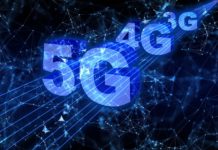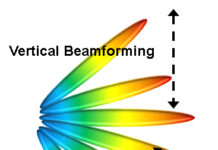What does 5G mean?
5G means fifth generation. Data transmission networks, since the 80s (1G), have been developed up to the fifth generation, and in the meantime sixth and seventh generations are being studied.
Which are the advantages of 5G?
5G network promises excellent speed, high throughput capabilities and extremely low latency. In terms of peak rate, 5G is about 20 times faster than 4G. This new technology also allows minimum download rate of 20 GB/s (while 4G reaches 1 GB/s). Broadly speaking, landline users (for example, offices and homes) will have slightly higher speed with respect to mobile users.
The vision of the surgeon in a tie that steps aside while attending a wedding, and remotely operates a patient, that has been showed in television advertising, might be somewhat exaggerated, but still gives an idea about what are the achievements to be reached.
In more prosaic terms, it will be possible to safely remotely control several devices, included automated vehicles that could be necessary to send in critical situations without endangering human lives.
Which are the risks of 5G?
The risks of 5G are basically the ones related to overconfidence in this complex technology. For example, the surgeon mentioned above seems to temporarily leave the wedding ceremony; nevertheless, if the surgical intervention is performed during the wedding banquet, and maybe after drinking spirits, well, that would be very comforting.
In addition, everything that is open to remote control can be target of fraudulent attacks.
Is it true that 5G frequencies have never been tested?
The Italian 5G will use the following frequency bands.
694 – 790 MHz
3,6 – 3,8 GHz
26,5 – 27,5 GHz
The first one is close to the one that is used for digital television, the second one is a little smaller than the one that is used by Telepass o advanced Wi-Fi, while the last one is just a little bit higher than the one that is currently used for broadband internet connection to the places that are not reachable by optical fibre connection.
Is it true that higher frequencies correspond to higher risks?
The energy E that is carried by the electromagnetic wave is indeed proportional to the wave frequency, but to assess the risk it is important to keep in mind how the radiation interacts with matter.
Higher microwaves frequencies nevertheless, have lower energy than infrared and visible radiation. Until we are in the domain of non ionizing radiation, the general rule is that the electromagnetic field will penetrate tissues as better as the frequency is lower.
For this reason the exposure limit for heating effects is lower for the 700 MHz band with respect to microwaves.
In addition, most of the devices used nowadays , from first generation Wi-Fi to LTE telephone, uses the 2.45 GHz frequency. Around this frequency, polar molecules, like water, absorb energy while rotating to orientate in the direction of the electric field; microwave ovens work based on this principle. Nevertheless, phones are considered safe because powers are smaller by several orders of magnitude.
Is it true the trees will be cut to allow the reception 5G signal?
Only the highest frequency band, around 26 GHz, can be easily shielded by trees with dense foliage, as well as by clouds, generating doubts on how 5G would affect weather forecast.
Actually, a characteristic of 5G will be to be able to adapt signal power (as it happens now), direction and frequency band based on traffic needs, exploiting also already existing 4G infrastructures. If someone breaks down healthy trees in town, any other speculative reason sounds more likely than 5G.
Is it true that 5G will require to raise exposure limits?
At the following link considerations about this specific point are reported.
https://www.fisicamedica.it/blog/reti-5g-parliamone-ma-parliamone-bene






